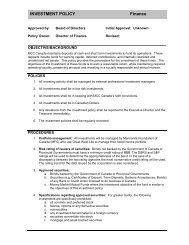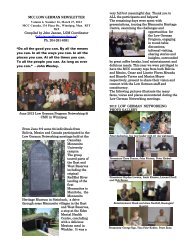Walking together: Healing and hope for Colombian refugees
Walking together: Healing and hope for Colombian refugees
Walking together: Healing and hope for Colombian refugees
Create successful ePaper yourself
Turn your PDF publications into a flip-book with our unique Google optimized e-Paper software.
w a l k i n g<br />
t o g e t h e r<br />
35<br />
implied rather than stated directly, <strong>and</strong> tone of voice, gestures or expression carry important clues <strong>for</strong><br />
interpreting the message. Latin American culture is a high context culture, there<strong>for</strong>e it is likely that the<br />
<strong>Colombian</strong> refugee family will employ communication strategies such as non verbal communication <strong>and</strong><br />
indirectness.<br />
In low context cultures, such as Canadian culture, meaning is conveyed through direct verbal communication.<br />
Clarity, “straight talk” <strong>and</strong> a <strong>for</strong>thright tone of voice are characteristics of low context communication. What<br />
is said is meant to be taken at face value, <strong>and</strong> direct questions or answers are appreciated.<br />
As mentioned above, we all use both types of communication at one point or another. Although Canadians<br />
are typically known to be direct, there are times when we speak indirectly, implying what we mean to say<br />
through our tone or a look rather than our words. Nonetheless, because of Canadians’ general tendency<br />
to be low context communicators <strong>and</strong> <strong>Colombian</strong>s’ general tendency to be high context communicators,<br />
it is important to underst<strong>and</strong> these different communication styles.<br />
Michelle LeBaron, in her article Communication Tools <strong>for</strong> Underst<strong>and</strong>ing Cultural Differences, outlines a<br />
series of suggestions <strong>for</strong> people from both high context <strong>and</strong> low context cultures to keep in mind when<br />
they communicate with people from the opposite context:<br />
“Low-context communicators interacting with high-context communicators should be mindful that<br />
<br />
<br />
<br />
<br />
<br />
<br />
<br />
acknowledgement;<br />
<br />
communicate fully <strong>and</strong> frankly;<br />
<br />
<br />
blocks are encountered.<br />
High-context communicators interacting with low-context communicators should be mindful that<br />
<br />
<br />
<br />
<br />
<br />
<br />
<br />
<br />
<br />
advance shared goals; <strong>and</strong><br />
<br />
The series of imaginary dialogues demonstrating indirect <strong>and</strong> direct communication that follow are<br />
intended to illustrate what to be attentive to when communicating with the <strong>Colombian</strong> refugee family.











